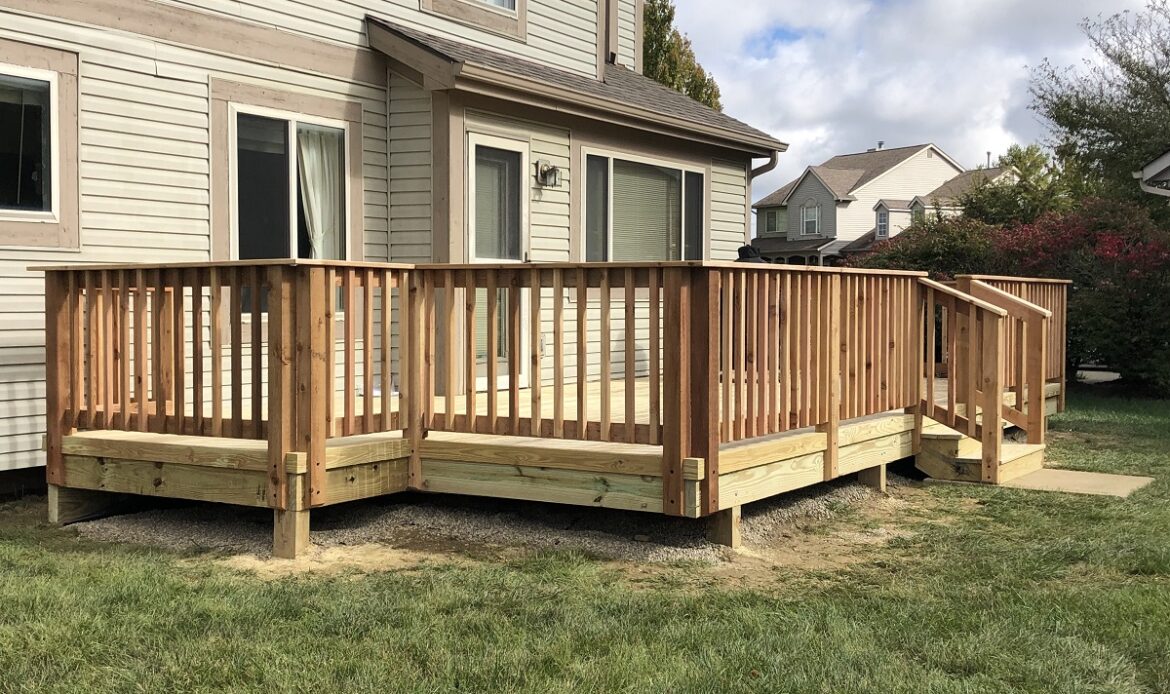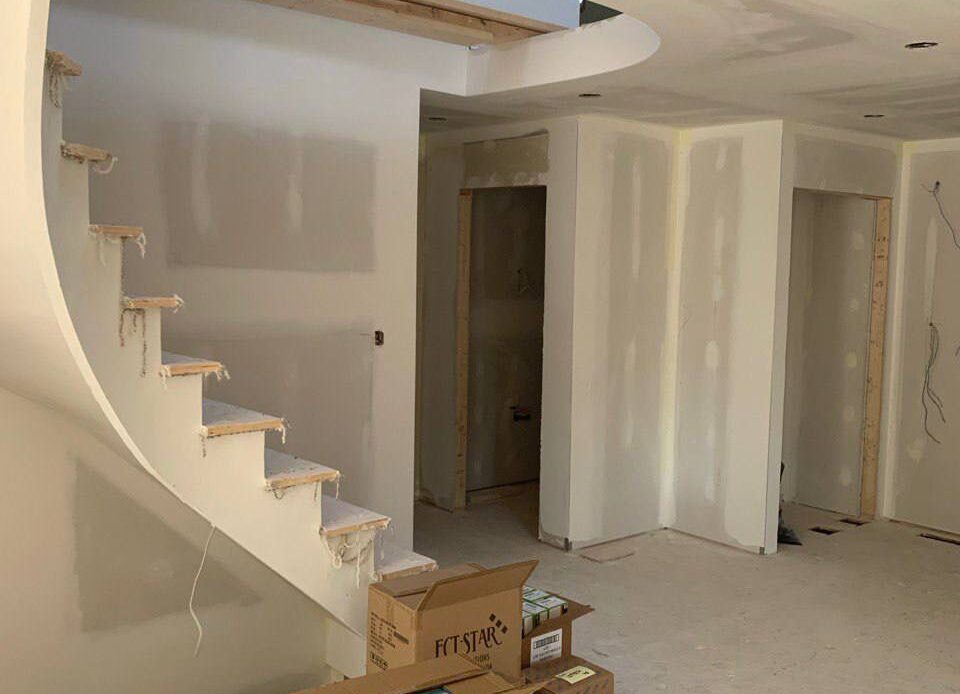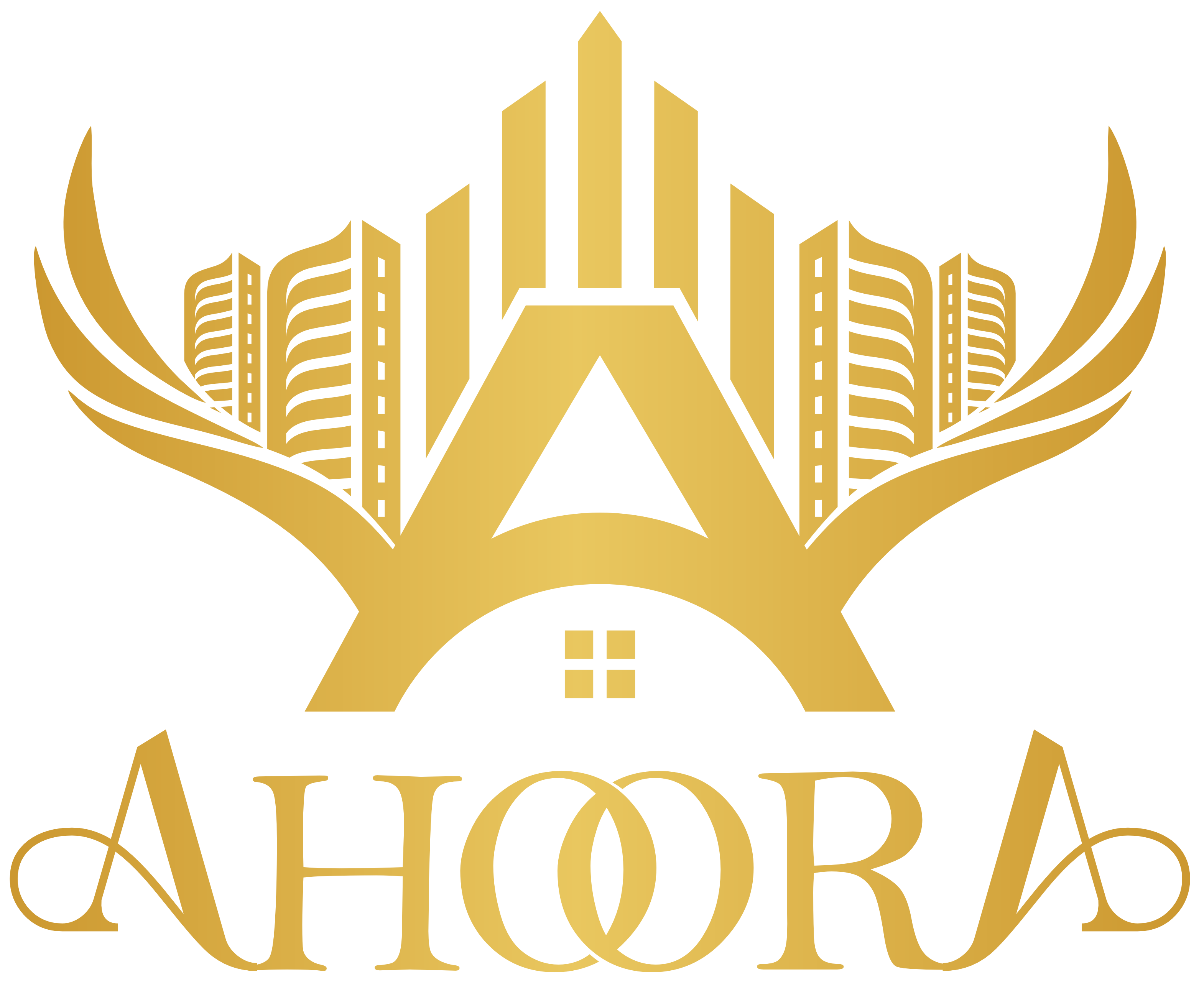Designing a functional home layout in Toronto can feel challenging when you think about the city’s changing weather and busy lifestyle. Many homeowners struggle with layouts that don’t work well year-round—spaces that feel cramped in winter, overheated in summer, or simply not practical for everyday living. The good news is that with the right planning, you can create a home that stays comfortable, efficient, and welcoming in every season.
In this blog, we’ll explore smart layout strategies designed specifically for Toronto’s climate and lifestyle. From making the most of natural light to planning storage for seasonal items, you’ll learn how to design a home that adapts with ease. Whether you’re renovating or building new, these tips will help you create a layout that is both functional and enjoyable for your family all year long.
Table of Contents
Understanding Toronto’s Seasonal Climate
Toronto’s seasonal climate is unique, and homeowners need to consider it carefully when planning home renovations or designing functional layouts. The city experiences cold, snowy winters with temperatures often dropping below freezing, while summers can be hot and humid. In addition, spring and fall bring frequent temperature fluctuations and increased rainfall. This wide range of weather conditions makes it important to design a home layout that can adapt to seasonal changes.
For example, during winter, well-insulated walls, energy-efficient windows, and a smart HVAC layout can help maintain warmth while lowering heating costs. In contrast, open layouts, proper cross-ventilation, and shaded outdoor areas improve comfort in the summer months. Storage solutions for seasonal items like coats, boots, or patio furniture also play a key role in keeping the home organized year-round.

Another factor to consider is natural light. Toronto winters often bring shorter daylight hours, so maximizing window placement, using reflective surfaces, and designing bright, functional spaces can make homes feel more inviting. On the other hand, in summer, shading elements such as overhangs or energy-efficient blinds prevent overheating.
Understanding these seasonal shifts allows homeowners to make smart design choices that increase comfort, efficiency, and long-term value. By incorporating layout solutions tailored to Toronto’s climate, you can create a home that feels welcoming in every season.
Smart Layout Solutions for Year-Round Comfort
When it comes to creating a functional home layout in Toronto, comfort in every season should be a top priority. Since the city experiences cold, snowy winters and hot, humid summers, your layout needs to balance insulation, ventilation, and practical use of space. A smart design not only makes your home comfortable but also helps reduce energy costs and ensures long-term functionality. Below are layout strategies that can transform your house into a space that works perfectly all year round.
1. Open-Concept Living with Defined Zones
Open-concept designs are popular in modern homes, but they can sometimes create challenges in maintaining comfort during different seasons. The solution is to create defined zones within the open space. For example, using furniture placement, area rugs, or sliding partitions helps separate the dining, living, and kitchen areas without closing off the layout. This keeps the home airy in summer while making it cozy in winter. Zoned spaces also allow better temperature control, as you can direct heating or cooling where it’s most needed.
2. Maximizing Natural Light
Natural light plays a big role in how functional and comfortable your home feels. South-facing windows bring in warmth during winter, reducing heating costs, while east- and west-facing windows capture light during mornings and evenings. At the same time, strategically placed shades or blinds can help block heat during summer afternoons. Designing rooms to maximize natural light not only improves energy efficiency but also creates a bright, inviting environment year-round.
3. Smart Storage for Seasonal Items
Toronto homeowners often struggle with storage because of bulky winter gear, snow shovels, and holiday decorations. A functional home layout should include smart storage solutions like built-in closets, mudrooms, or under-stair compartments. For example, a mudroom near the entrance with hooks, benches, and shelving makes it easy to manage coats and boots in winter while keeping the rest of the house clutter-free. During warmer months, these spaces can be used to store sports gear, gardening tools, or patio accessories.
4. Efficient Heating and Cooling Zones
One of the biggest challenges in Toronto homes is keeping the house warm in winter and cool in summer without driving up utility bills. A well-planned layout can help by supporting zoned heating and cooling systems. Bedrooms on upper floors, for instance, can be designed with better insulation and ceiling fans, while basements benefit from proper ventilation. Open layouts also work well when combined with energy-efficient HVAC systems, allowing air to circulate evenly throughout the home.
5. Flexible Multi-Use Spaces
With more people working from home, flexible layouts have become essential. Designing multi-use rooms ensures your home adapts to your lifestyle throughout the year. For instance, a guest room that doubles as a home office, or a finished basement that functions as both a recreation area and extra storage, makes your home more versatile. This approach helps you maximize space without sacrificing comfort, even when your needs change seasonally.
6. Outdoor-Indoor Flow
A smart layout also considers the connection between indoor and outdoor spaces. In summer, easy access to patios, decks, or gardens extends your living space and allows for natural ventilation. Sliding glass doors, covered porches, or screened-in areas provide comfort during warmer months. In winter, these same spaces can be insulated or used for storage, ensuring they remain practical year-round.
7. Prioritizing Energy Efficiency
Finally, a truly functional home layout in Toronto is one that reduces energy waste. Positioning living areas where they get the most natural light, installing proper insulation in walls and attics, and designing layouts that support cross-ventilation all make a big difference. These decisions not only improve comfort but also save money on heating and cooling bills.
Materials and Renovation Features That Enhance Comfort
When planning a home renovation in Toronto, choosing the right materials and features is just as important as the layout. The materials you use not only affect the look of your home but also determine how comfortable it feels throughout the year. Since Toronto experiences hot summers, cold winters, and damp transitional seasons, selecting durable, energy-efficient, and climate-appropriate materials is key to creating a space that feels cozy no matter the weather.

Insulated Windows and Doors
One of the most effective upgrades is installing energy-efficient windows and doors. Double- or triple-pane windows with low-E coatings help keep heat inside during winter and reflect the sun’s rays in summer. High-quality insulated doors prevent drafts, making rooms feel warmer without overusing your heating system. These upgrades not only increase comfort but also lower your energy bills, a big advantage for Toronto homeowners.
Flooring for All Seasons
Flooring choices also play a major role in comfort. Hardwood and laminate are popular options, but they can feel cold underfoot during Toronto’s winters. Adding radiant floor heating under tiles or engineered wood provides warmth and comfort in colder months. Carpeting in bedrooms or basements can also add a soft, insulating layer. Meanwhile, moisture-resistant flooring materials like porcelain tile or luxury vinyl are excellent for areas prone to humidity, ensuring your home remains durable and stylish year-round.
Energy-Efficient Insulation
Proper insulation is essential for keeping your home’s temperature stable. Spray foam insulation in walls, attics, and basements helps seal gaps that allow air leaks. Not only does this keep your home warmer in winter and cooler in summer, but it also reduces noise, making your living space more peaceful. This feature is especially important in Toronto, where fluctuating temperatures can otherwise cause uneven comfort levels in different parts of the home.
Heating and Cooling Systems
Renovation projects are the perfect time to upgrade to modern HVAC systems. High-efficiency furnaces, ductless mini-splits, and smart thermostats help maintain a consistent indoor climate without wasting energy. In homes with open layouts, ceiling fans or zoned heating systems can further improve comfort by evenly distributing air. These modern features ensure that your home remains livable through Toronto’s temperature swings.
Natural Light and Ventilation
Comfort doesn’t only come from temperature—it also depends on how airy and bright a home feels. Adding larger windows, skylights, or sliding doors during your renovation can bring in more natural light, which boosts mood and reduces the need for artificial lighting. Proper ventilation features, like exhaust fans in kitchens and bathrooms or energy recovery ventilators (ERVs), also help remove excess moisture and improve indoor air quality.
Smart Home Features
Technology can also play a role in making your renovated home more comfortable. Smart thermostats, automated blinds, and humidity sensors allow you to control your home’s environment with ease. For example, blinds that adjust automatically with the sun’s position can keep rooms cooler in summer and warmer in winter. These features are particularly useful in Toronto’s ever-changing climate.
Durable, Low-Maintenance Materials
Finally, materials that are durable and easy to maintain enhance long-term comfort. Quartz countertops, moisture-resistant drywall, and composite decking withstand wear and tear without frequent upkeep. By choosing low-maintenance finishes, you spend less time on repairs and more time enjoying your newly renovated space.
Energy Efficiency and Sustainability Considerations
When planning a home renovation in Toronto, energy efficiency and sustainability should be at the top of your list. Not only do these upgrades help reduce your utility bills, but they also make your home more comfortable throughout the year. Since Toronto’s climate includes cold winters and warm summers, homeowners need solutions that work for both extremes. By focusing on eco-friendly renovation features, you can improve comfort, save money, and lower your environmental footprint.
Insulation and Windows for Seasonal Comfort
Good insulation is one of the most important features to consider during a renovation. Without proper insulation, heat escapes during the winter and seeps in during the summer, causing your HVAC system to work harder. Adding or upgrading insulation in the walls, attic, and basement makes a big difference in energy savings. Similarly, energy-efficient windows are essential in Toronto’s climate. Double- or triple-pane windows with low-emissivity coatings keep your home warm in the winter and cool in the summer while reducing drafts and condensation.
Heating and Cooling Efficiency
Heating and cooling account for a large portion of energy use in most Canadian homes. Upgrading to a high-efficiency furnace, boiler, or heat pump can significantly reduce energy consumption. Radiant floor heating is another excellent option, providing steady warmth during cold months. Pairing your system with a smart thermostat allows you to control temperature more precisely, which means less wasted energy and more savings on utility bills.
Water-Saving Fixtures and Systems
Energy efficiency isn’t just about heating and cooling—it also includes water use. Low-flow toilets, faucets, and showerheads reduce water consumption without affecting performance. You can also consider installing a tankless water heater, which provides hot water on demand rather than storing it in a large tank. This upgrade saves both energy and space, making it a popular choice in modern Toronto home renovations.
Eco-Friendly Building Materials
Sustainability goes hand-in-hand with energy efficiency. Choosing eco-friendly building materials not only reduces your environmental impact but also creates a healthier living space. Recycled wood, bamboo, cork, and reclaimed stone are excellent options. Paints and finishes that are low in volatile organic compounds (VOCs) improve indoor air quality while reducing harmful emissions. These materials are durable, attractive, and contribute to a greener renovation.
Renewable Energy Options
For homeowners looking to take energy efficiency a step further, renewable energy solutions are worth considering. Solar panels can provide clean electricity, especially during sunny summer months. While the upfront cost may seem high, government incentives and long-term energy savings make solar a smart investment. Some homeowners also explore geothermal heating and cooling systems, which use the stable temperature underground to regulate indoor comfort year-round.
Long-Term Benefits of Sustainable Renovations
Investing in energy efficiency and sustainability pays off in multiple ways. First, it lowers monthly expenses, which is especially valuable with rising energy costs in Toronto. Second, it improves home comfort by maintaining stable temperatures and better air quality. Finally, it increases your property value, as more buyers are now looking for homes with eco-friendly features. Choosing sustainable renovation practices not only benefits you but also supports a cleaner environment for future generations.
Common Mistakes to Avoid in Seasonal Home Layouts
When planning a home in Toronto, it’s easy to get carried away with design ideas and forget how seasonal changes affect daily comfort. Toronto’s climate brings hot summers, freezing winters, and everything in between, which means your home layout must be practical all year long. To help you avoid costly errors, here are the most common mistakes people make when designing seasonal home layouts—and how to prevent them.
1. Ignoring Proper Insulation and Ventilation
One of the biggest mistakes is focusing only on heating systems without giving equal attention to insulation and ventilation. Poor insulation leads to cold drafts in winter and heat loss that increases energy bills. On the other hand, ignoring ventilation makes the house stuffy during summer. The best approach is to combine airtight insulation with efficient ventilation systems like HRVs (Heat Recovery Ventilators) that balance fresh air with temperature control.
2. Overlooking Window Placement and Quality
Windows are more than just decorative—they affect natural light, heat retention, and cooling. Placing too many large windows on the west side can cause overheating in the summer. Using single-pane glass is another common mistake, as it allows too much heat to escape during cold months. Energy-efficient double or triple-glazed windows with low-E coatings prevent these issues and improve year-round comfort.
3. Forgetting About Flexible Living Spaces
Toronto families often experience different lifestyle needs in each season. In winter, cozy indoor areas are essential, while summer calls for easy access to outdoor spaces. A common mistake is designing rigid layouts that don’t allow flexibility. Instead, consider open-concept areas that can be adapted for gatherings, sliding doors that connect indoors to patios, or multi-purpose rooms that serve different functions depending on the season.
4. Neglecting Entryway and Storage Design
Another frequent oversight is not planning for seasonal storage. Toronto winters bring snow, slush, and heavy coats, which can quickly clutter entryways if not properly managed. Homes without mudrooms, coat closets, or heated entryways often end up messy and less functional. Adding built-in storage, benches, and durable flooring near entrances helps keep the home organized and practical throughout the year.
5. Poor Zoning of Heating and Cooling Systems
Many homeowners install one central thermostat for the entire house, which can create uneven temperatures. For example, upstairs bedrooms may feel too hot in summer while the basement stays too cold in winter. Zoning your HVAC system—where different parts of the house can be controlled separately—prevents this mistake and ensures comfort in every season.
6. Using the Wrong Materials
Choosing materials based only on looks is another common pitfall. For example, hardwood floors may expand or contract with seasonal humidity, while carpets can trap allergens during winter. Instead, opt for materials that perform well year-round, such as engineered wood, ceramic tiles, or moisture-resistant flooring in basements. Durable, low-maintenance finishes will save money and improve comfort in the long run.
7. Forgetting Outdoor-Indoor Flow
Toronto residents love spending time outdoors in summer, but many home designs don’t support smooth transitions between indoor and outdoor living. Skipping features like covered patios, sliding glass doors, or shaded decks is a mistake. These features extend living space and allow families to enjoy fresh air without sacrificing comfort, no matter the season.
8. Overlooking Energy Efficiency Upgrades
Finally, many homeowners forget that energy efficiency is directly linked to comfort. Failing to include smart thermostats, LED lighting, or energy-efficient appliances may seem like a small issue but can lead to higher costs and discomfort. These upgrades make it easier to adjust to seasonal shifts while keeping utility bills under control.
Why Work with a Professional Toronto Renovation Company
When planning a renovation in Toronto, many homeowners wonder if they should take the DIY route or hire professionals. While DIY projects can seem cost-effective at first, the reality is that a professional Toronto renovation company brings experience, expertise, and efficiency that can save you both time and money in the long run. More importantly, professional renovators understand how to design layouts and choose materials that stand up to Toronto’s seasonal climate, keeping your home comfortable year-round.
Expertise in Toronto’s Building Standards
Toronto has strict building codes and regulations that every renovation project must follow. A licensed renovation company is familiar with these standards and ensures all work is done correctly and safely. From obtaining permits to meeting energy-efficiency requirements, professionals handle the details that most homeowners may overlook. This not only prevents costly mistakes but also ensures your home maintains or even increases its value after the renovation.
Customized Design for Seasonal Comfort
A major advantage of working with experts is their ability to create designs tailored to Toronto’s unique four-season climate. They know how to maximize natural light in winter, improve ventilation for humid summers, and recommend layouts that balance open space with insulation needs. Whether it’s installing energy-efficient windows, heated bathroom floors, or choosing materials that resist moisture and temperature swings, professional renovators know what works best for local homes.
Access to High-Quality Materials and Skilled Trades
Professional companies often have established relationships with suppliers and skilled tradespeople. This means you get access to better quality materials at competitive prices, along with craftsmanship that ensures durability. Instead of guessing which flooring will withstand Toronto’s cold winters or which countertops can resist humidity, you benefit from expert advice backed by years of hands-on experience.
Saving Time and Avoiding Stress
Renovations can be overwhelming without proper planning. From coordinating multiple trades to managing budgets and timelines, there’s a lot that can go wrong. A professional Toronto renovation company takes on this responsibility, ensuring your project runs smoothly. They manage scheduling, deal with unexpected issues, and keep you updated throughout the process. This allows you to focus on your daily life while knowing your home is in capable hands.
Long-Term Value and Warranty Protection
DIY renovations may look good initially, but poor workmanship often shows over time. A professional renovation not only improves your comfort but also increases the long-term value of your home. Most reputable renovation companies in Toronto also offer warranties on their work, giving you peace of mind that any issues will be addressed without additional cost. This protection is something DIY projects cannot guarantee.
Cost-Effectiveness in the Bigger Picture
Many homeowners assume hiring a contractor is more expensive, but mistakes in DIY renovations can lead to higher costs in repairs and replacements. Professionals know how to maximize your budget, avoid unnecessary expenses, and source materials efficiently. In fact, a well-planned renovation can reduce energy bills and maintenance costs, helping you save money over time.
Conclusion
Designing seasonal home layouts in Toronto requires careful planning to balance comfort, functionality, and energy efficiency. By considering the city’s unique climate, selecting durable materials, and incorporating smart layout solutions, homeowners can enjoy a space that works well in both summer and winter. Partnering with a professional Toronto renovation company ensures that your project is customized to your lifestyle while avoiding common mistakes. A thoughtful approach to seasonal layouts not only improves daily living but also adds long-term value to your home. With the right strategy, you can create a comfortable, sustainable, and stylish home that perfectly fits Toronto’s seasonal demands.
FAQs
-
What is a seasonal home layout in Toronto?
A seasonal home layout is a design that adapts to Toronto’s changing weather, offering comfort in both hot summers and cold winters. It focuses on smart layouts, insulation, and energy-efficient features.
-
How can I make my Toronto home energy-efficient year-round?
You can improve energy efficiency by upgrading insulation, choosing double- or triple-pane windows, using energy-efficient HVAC systems, and integrating sustainable materials into your renovation.
-
Why should I hire a Toronto renovation company for seasonal layouts?
Local renovation companies understand Toronto’s climate challenges and building codes. They can design layouts that balance comfort, functionality, and efficiency while avoiding costly mistakes.
-
What materials are best for Toronto’s seasonal renovations?
Durable and climate-friendly materials such as hardwood, ceramic tiles, insulated windows, and moisture-resistant finishes work best for homes in Toronto.
-
What are common mistakes homeowners make when planning seasonal layouts?
Skipping proper insulation, ignoring natural light, poor HVAC planning, and not considering long-term sustainability are common mistakes that reduce comfort and increase costs.

